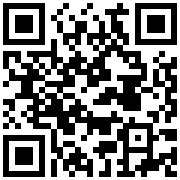Quanzhou TESUNHO Electronics Co.,Ltd
Tel:86 595 2208 2266
Fax:86 595 2208 2266
Mob:0086 18750083582
E-mail:[email protected]
Walkie-talkie History
Walkie-talkie technology was first produced in the turmoil of the 1920s and was born in the Westinghouse laboratory. A weird inventor named John Kermode “what a whimsical” wished to automate the sorting of postal documents. At that time, every idea about the application of electronic technology was very novel. His idea was to make a walkie-talkie mark on the envelope. The information in the walkie-talkie was the address of the recipient, just like today's zip code. For this reason, Kermode invented the earliest walkie-talkie logo, and the design scheme was very simple. That is, one “bar” represents the number “1”, two “bars” represents the number “2”, and so on. He then invented a walkie-talkie reading device made up of basic components: a method (which is capable of emitting light and receiving reflected light) to measure the reflected signal strip and space, namely an edge-positioning coil; and a method of using the measurement result, ie translation Coder.
Kermode used the newly invented photovoltaic cell to collect reflected light. "Air" reflects strong signals, and "bars" reflect weak signals. Unlike today's high-speed electronic component applications, Kermode uses magnetic coils to measure "bars" and "blanks." It's like a child connecting a wire to a battery and wrapping it around a nail. Kermode uses a coil with a core to attract a switch when it receives a "empty" signal, and releases the switch and turns on the circuit when it receives a "bar" signal. Therefore, the earliest walkie-talkie readers were noisy. The switch is controlled by a series of relays. "On" and "Off" are determined by the number of "bars" printed on the envelope. In this way, the walkie-talkie symbol is directly divided into letters.
Shortly thereafter, Kermode co-author Douglas Young made some improvements based on the Kermode code. The amount of information contained in the Kermode code is quite low, and it is difficult to make more than ten different codes. The Young code uses fewer bars, but utilizes empty dimensional changes between bars, just like today's UPC walkie-talkie symbols use four different bar sizes. The new walkie-talkie symbol can encode one hundred different regions in the same size space, while the Kermode code can only encode ten different regions.
It was not until the 1949 patent document that the full range of walkie-talkie symbols was invented by Norm Woodland and Bernard Silver, and there was no record of intercom technology and no precedent for practical application in the prior patent documents. The idea of Norm Woodland and Bemard Silver is to use the vertical "stripe" and "empty" of Kermode and YOung, and bend it into a ring, much like the target of archery. In this way, by scanning the center of the pattern, the walkie-talkie symbol can be decoded regardless of the orientation of the interphone's symbol direction.
In the course of continuous improvement using this patented technology, Isaac-Azimov, a science fiction writer, described in his book “The Naked Sun” an example of using a new method of information encoding to achieve automatic recognition. At that time, people thought that the intercom symbol in this book looked like a checkerboard, but today's walkie-talkie professionals will immediately realize that this is a two-dimensional matrix walkie-talkie symbol. Although this walkie-talkie symbol has no direction, positioning, and timing, it is obviously that it represents a high information density digital code.
Until Iterface Mechanisms developed a "two-dimensional code" in 1970, there was a printing and reading device for a two-dimensional matrix walkie-talkie at a price suitable for sale. At that time, the two-dimensional matrix walkie-talkie was used to automate the newspaper publishing process. The two-dimensional matrix interphone is printed on paper tape and read by today's one-dimensional CCD scanning. The light from the CCD shines on the tape, and each photocell is aligned with a different area of the tape. Each photocell outputs a different pattern according to whether the walkie-talkie is printed on the tape, and the combination produces a high-density information pattern. In this way, a single character can be printed in the same size space as a single bar in the early Kermode code. Timing information is also included, so the whole process is reasonable. When the first system enters the market, a complete set of equipment, including printing and reading equipment, costs about $5,000.
Shortly thereafter, with the continuous development of LEDs (Light Emitting Diodes), microprocessors, and laser diodes, new signs (symbols) and their application explosions were ushered in, which people call "the intercom industry." Today, it is rare to find companies or individuals who have not directly touched on the fast and accurate walkie-talkie technology.
Previous: The history of interphone
Quanzhou TESUNHO Electronics Co.,Ltd
Tel:86 595 2208 2266
Fax:86 595 2208 2266
Mob:0086 18750083582
E-mail:[email protected]


Tesunho T61 Commercial Analog Radio is ready. Please reach out to us for more information.